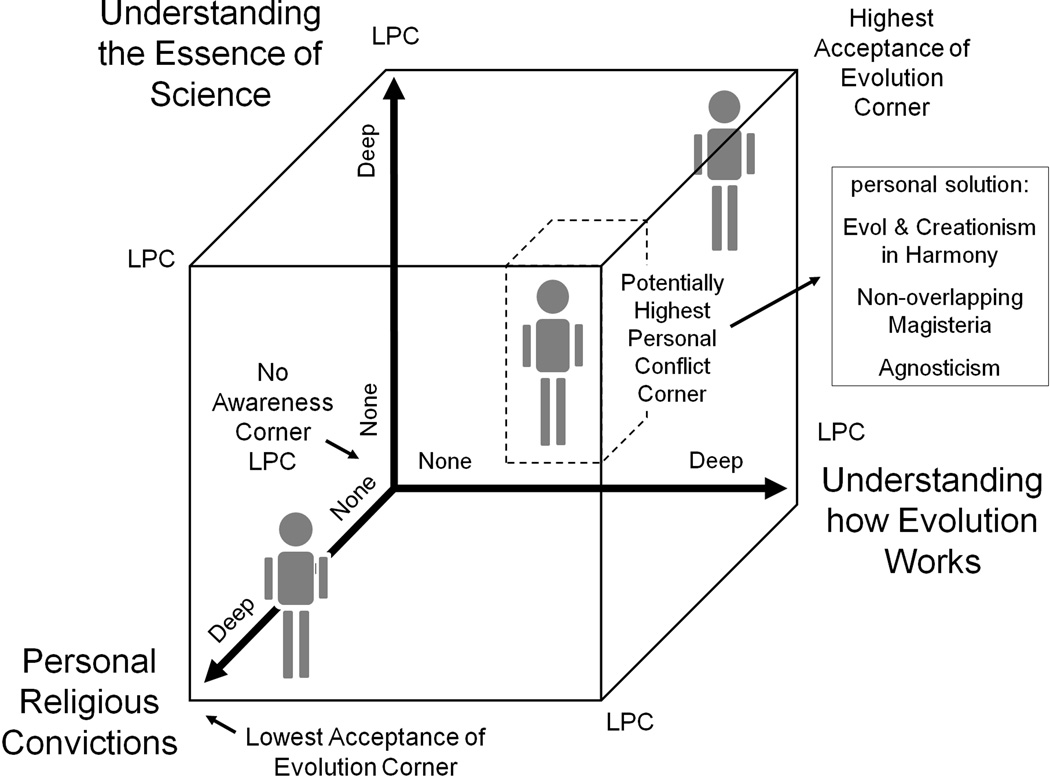Fig. 1.
Conceptual and quantitative assessment of acceptance of evolution. 1. Theoretical three-dimensional landscape where acceptance of evolution is depicted as function of religiosity, science awareness, and evolution literacy. The point zero corresponds to low/none personal religious convictions, understanding how evolution works, or understanding of the essence of science; zero is a no awareness corner, with low probability of occurrence (LPC). The tips of the coordinates’ arrows correspond to a high/deep religiosity, evolution, or science awareness. The highest acceptance of evolution corner (top right) is characterized for its low religiosity and high/deep evolution and science awareness. The lowest acceptance of evolution corner (bottom left) is characterized by its high religiosity and low evolution and science awareness. A potentially highest personal conflict corner resides at the intersection of high or deep religiosity and evolution and science awareness; this conflict condition can be resolved by the individual adopting comforting positions, such as: evolution and creationism are in harmony, non-overlapping magisteria (= science and religion occupy separate domains), or agnosticism (doubt about the existence or nonexistence of a deity). Other corners are also labeled LPC due to their low probability of occurrence.

